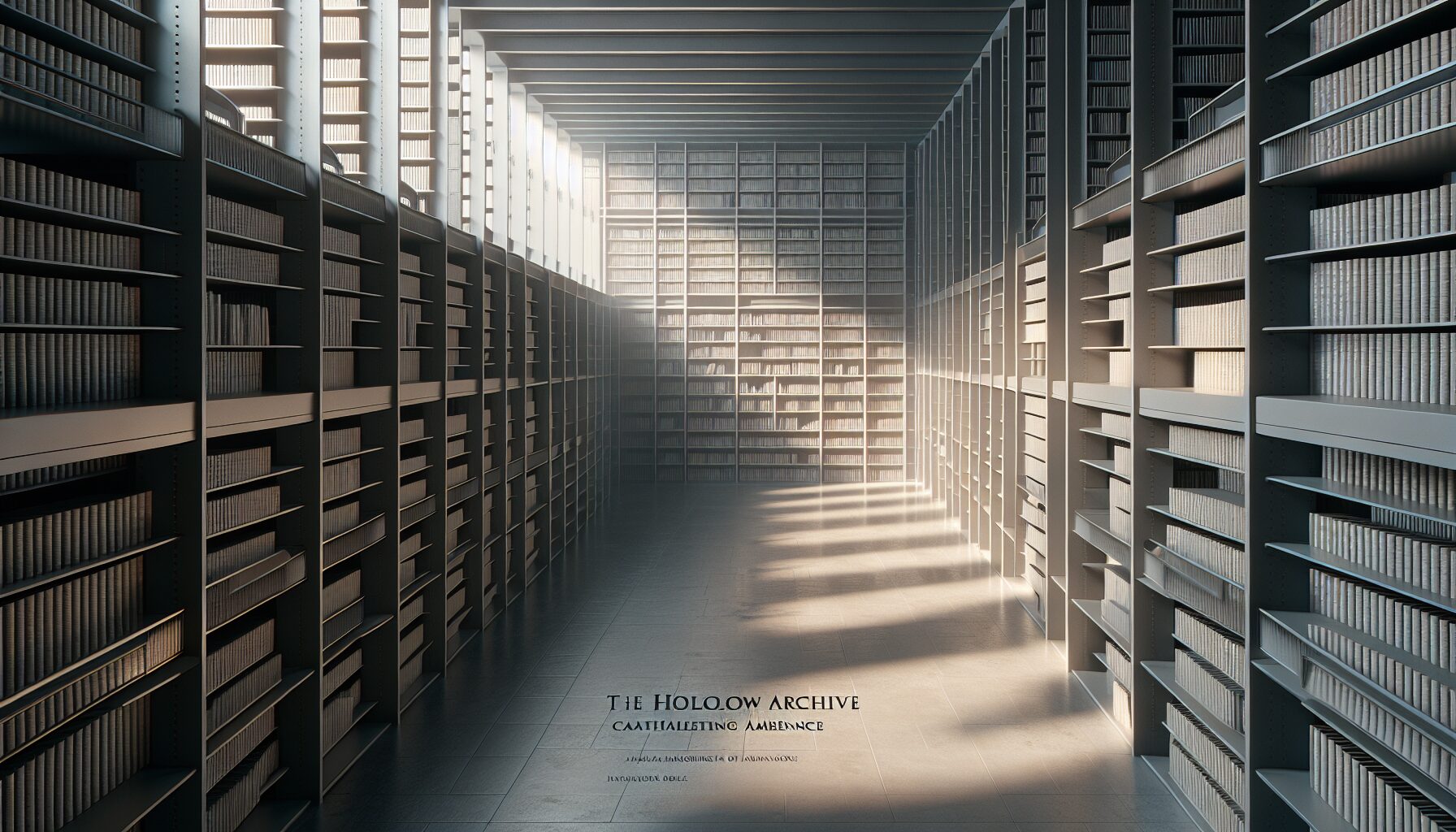In the world of archival science, the process of cataloging deals not only with what is present but also with what is absent. This is where the concept of the “hollow archive” comes in—a collection where the most significant entries are often the gaps themselves.
Understanding the Concept
The notion of the hollow archive challenges traditional ideas about records and documentation. Instead of an exhaustive compilation of every available resource, it acknowledges that absence holds its own kind of information. As Jacques Derrida highlighted in his infamous phrase, “there is no archive without a place of consignation, without a technique of repetition, and without a certain exteriority.” This idea suggests that the history we preserve and the gaps we encounter are equally significant in the storytelling of our past.
The Importance of Absence
Sometimes, absence can speak louder than presence. When historians and archivists encounter these gaps, they are often faced with questions that lead to deeper understanding. What was deemed unworthy of preservation? What narratives were excluded or repressed? These inquiries open up new avenues of research and critique, allowing for exploration into societal norms and biases over time.
Examples in Practice
Consider the case of the Smithsonian’s National Museum of American History and its collection practices. In their pursuit of documenting American history, they’ve come to recognize the significance of what is missing and who decides what is worthy of saving. The efforts to capture overlooked voices have led to a more inclusive and comprehensive reflection of American life.
Challenges and Considerations
- Bias Recognition: Understanding whose stories are missing requires a critical eye and the acknowledgment of systemic bias in archival processes.
- Resource Allocation: Ensuring that “gaps” are strategically chosen for investigation rather than focusing disproportionately on already well-documented narratives.
- Ethical Responsibilities: Archivists must balance the need to unearth neglected stories while respecting the privacy and intentions of the individuals related to historical events.
The Future of Archives
The exploration of the hollow archive represents a shift in archival paradigms—a move from static collections to dynamic inquiries into the past. As technology advances, the capacity to identify, interrogate, and fill these gaps becomes more sophisticated, allowing for a richer understanding of history’s tapestry.
“For every photograph that ends up in an archive, countless others are lost, much like the stories they once captured,” observes Colin Pantall, showcasing the ephemeral and selective nature of our documented history.
The journey of cataloging absence continues, holding a mirror up to society’s omissions and inspiring dialogue on the narratives worth preserving.


